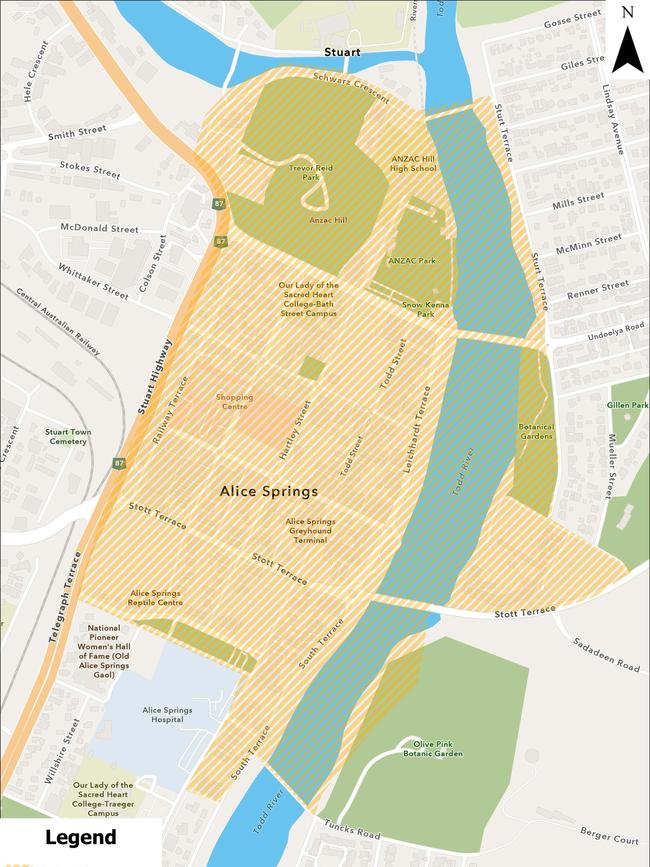Alice Springs Public Disorder Declaration explained
What does the Public Disorder Declaration really mean for the residents of Alice Springs? We explain.
Police & Courts
Don't miss out on the headlines from Police & Courts. Followed categories will be added to My News.
Northern Territory Police Commissioner Michael Murphy has issued a Public Disorder Declaration for all residents of Alice Springs in the wake of community unrest and violent crime.
The declaration includes a restricted movement provision in the Alice Springs CBD for all residents and visitors to the town - of all ages.
But what does it really mean for the residents of the Northern Territory town? We explain.
Dates: From Monday, July 8 to Thursday, July 11
Hours: From 10pm – 6am each day
Boundaries: The declared area includes the confines between Anzac Hill, Schwarz Crescent, down to the Alice Springs Hospital, from the Stuart Highway across to Leichhardt and Stott Terrace.

Police powers and penalties: Under a Declaration (section 135B and 135C PAA) Police have powers to control the movement of people in order to prevent, stop or reduce public disorder in the declared area (section 135D). These new powers can only be exercised by police while a PDD is in effect. A failure to abide by a request by police can lead to an offence and it can lead to an infringement notice or an arrest.
Police can:
>>Direct a person (to whom the declaration applies) to not enter, or to leave, the declared area;
>>Direct a group of people to disperse (as long the as declaration applies to at least one person in the group);
>>Direct any person to remain where they are (for no longer than 2 hours) if Police believe it is reasonably necessary to prevent a risk to the safety of any person.
When you can enter the declared area: Police Commissioner Michael Murphy said residents could not enter the declared area unless it was for certain reasons.
He said police would use discretion and have a conversation with residents caught in the curfew zone, to ensure they were there for the right reasons.
Some of the acceptable situations for entering the zone he outlined were: To attend work, to purchase fast food, to visit family, to flee domestic violence, or for a lawful reason. However, residents should avoid the area where possible.


